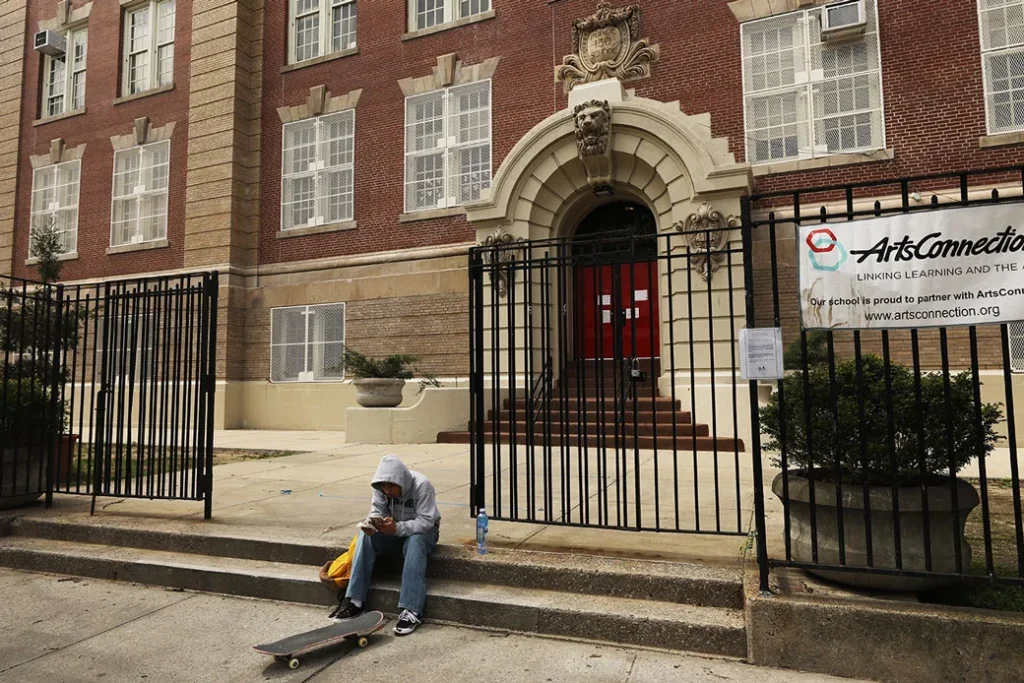Government funding for public schools is a cornerstone of a well-functioning education system. It plays a crucial role in ensuring that all students have access to quality education, regardless of their background. This funding supports various aspects of the educational experience, from classroom resources to teacher salaries. Here’s an in-depth look at why government funding is vital for public schools and how it impacts students, teachers, and communities.

Ensuring Equity in Education
Government funding helps bridge the gap between affluent and less affluent school districts, promoting educational equity.
- Resource Allocation: Schools in lower-income areas often have fewer resources compared to those in wealthier districts. Government funding helps equalize resources by providing necessary materials, technology, and facilities.
- Support for Underserved Communities: Funding can be directed to schools serving high-needs populations, ensuring that students from marginalized or disadvantaged backgrounds receive the support they need to succeed.
Improving School Facilities
Adequate funding is essential for maintaining and improving school facilities, creating a conducive learning environment.
- Building Maintenance: Regular maintenance and upgrades to school buildings ensure a safe and healthy environment for students and staff. This includes repairs to aging infrastructure, upgrading heating and cooling systems, and addressing health and safety issues.
- Modernization: Government funding allows schools to modernize facilities with updated technology and learning spaces. This includes smart classrooms, science labs, and library resources that enhance the educational experience.
Supporting Quality Education
Investments in education directly impact the quality of instruction and student outcomes.
- Teacher Salaries and Training: Funding supports competitive salaries for teachers and professional development opportunities. Well-compensated and well-trained teachers are more likely to stay in the profession and provide high-quality instruction.
- Classroom Resources: Schools use funding to purchase textbooks, educational software, and other classroom materials. These resources are crucial for effective teaching and learning.
Enhancing Student Services
Government funding helps provide additional services that support students’ academic and personal development.
- Special Education Programs: Funding is essential for programs that support students with special needs. This includes hiring specialized staff, developing individualized education plans (IEPs), and providing assistive technology.
- Counseling and Mental Health Services: Access to school counselors and mental health services is crucial for supporting students’ emotional and psychological well-being. Funding ensures that these services are available and adequately staffed.
Expanding Extracurricular Activities
Extracurricular activities play a significant role in student development and engagement.
- After-School Programs: Government funding supports a range of after-school programs, including sports, arts, and academic clubs. These activities provide students with opportunities to explore interests, develop skills, and build social connections.
- Enrichment Programs: Funding allows schools to offer enrichment programs that enhance learning beyond the standard curriculum. This includes field trips, guest speakers, and specialized workshops.
Reducing Class Sizes
Smaller class sizes contribute to more personalized instruction and better student outcomes.
- Hiring Additional Staff: Funding enables schools to hire more teachers and reduce class sizes, allowing for more individualized attention and support. This helps improve student engagement and academic performance.
- Supporting Specialized Instruction: Smaller classes facilitate the use of differentiated instruction, where teachers can tailor their teaching methods to meet the diverse needs of students.
Addressing School Safety
Safety is a critical concern in schools, and government funding helps address various aspects of school safety.
- Security Measures: Funding can be used to implement security measures such as surveillance systems, secure entrances, and emergency preparedness plans. These measures contribute to a safer school environment for students and staff.
- Health and Safety Protocols: Funding supports health and safety protocols, including cleaning supplies, sanitation, and measures to prevent the spread of illness.
Encouraging Community Engagement
Government funding helps foster stronger connections between schools and their communities.
- Family Engagement Programs: Funding supports programs that encourage parental involvement and family engagement in school activities. This includes workshops, community events, and communication tools.
- Partnerships with Local Organizations: Schools can use funding to build partnerships with local organizations and businesses, creating opportunities for students and strengthening community ties.
Ensuring Long-Term Sustainability
Sustainable funding is crucial for maintaining the quality and stability of public education.
- Consistent Funding Streams: Reliable and consistent government funding ensures that schools can plan and execute long-term initiatives without uncertainty. This stability supports ongoing improvements and innovations in education.
- Emergency Funding: Government funding can also provide emergency support during financial crises or unexpected events, helping schools navigate challenges without compromising student services.
Conclusion
Government funding is essential for the effective operation and improvement of public schools. It ensures equity in education, supports high-quality instruction, and enhances student services and facilities. By investing in public schools, governments contribute to the overall development and success of students, foster community engagement, and promote long-term educational sustainability. Adequate funding is not just a financial necessity but a fundamental investment in the future of our society.

